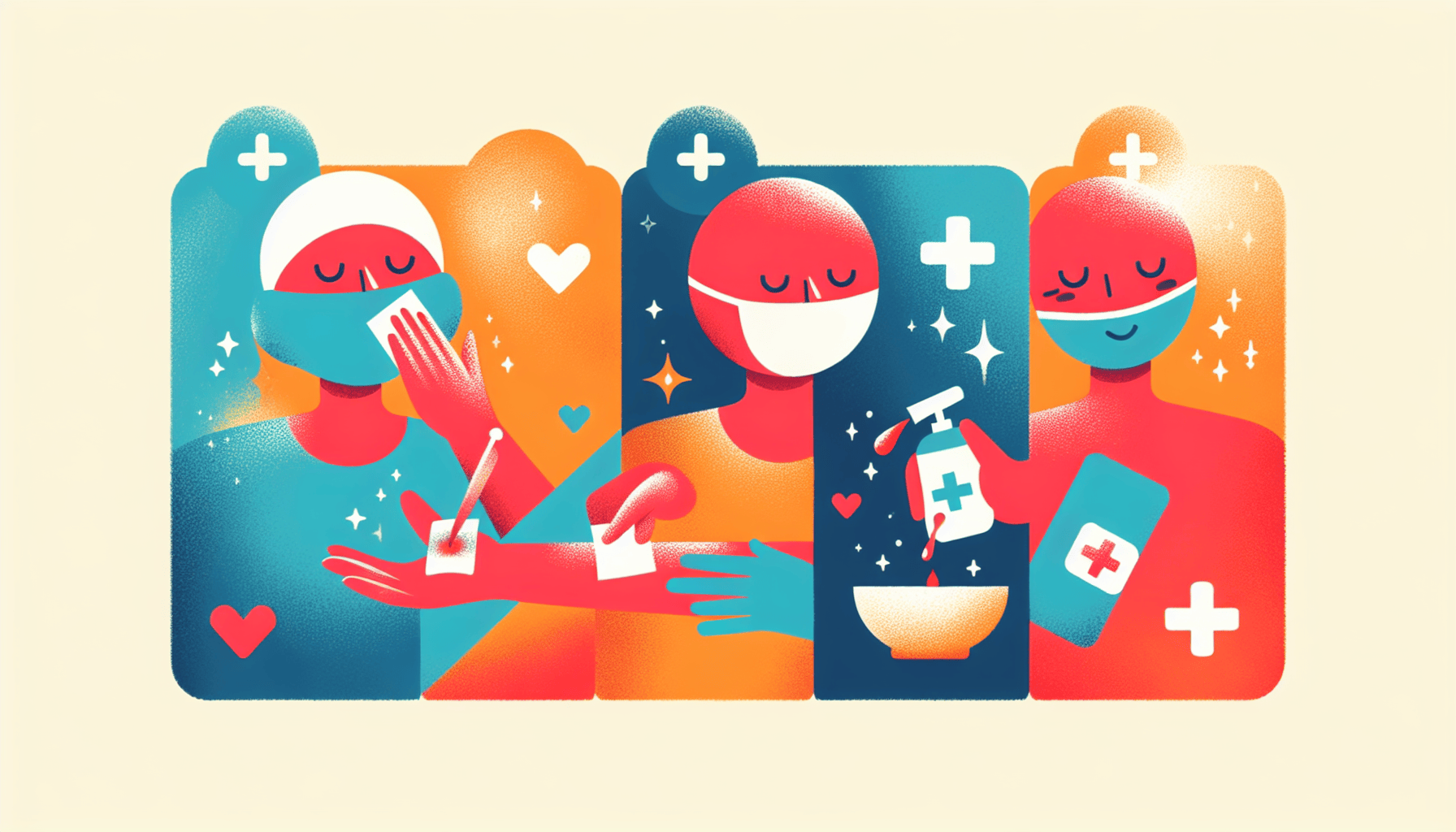Can I Take Zepbound a Day Early?
Key TakeawaysZepbound is a once-weekly injectable medication for weight management and obstructive sleep apnea (OSA) linked to obesity.Taking Zepbound a day early is [...]
Read More
Medically reviewed by Abhijit Bhattacharyya | MD, PhD, MBA, Tufts University School of Medicine - Miami, Florida on September 19th, 2023.
When you or your child gets a cut, scrape, or burn, it's essential to clean the wound properly right away to prevent infection and promote healing. Follow these five simple steps to ensure proper wound care.
Before touching your wound or treating someone else's injury, clean your hands thoroughly with soap and water or hand sanitizer. If possible, put on disposable gloves for added protection. Clean, covered hands help prevent infections.
If the wound is bleeding, use a clean cloth or sterile gauze to gently press on the wound until the bleeding stops. Small cuts and scrapes may not require pressure. Elevate the affected area if possible. If blood soaks through the cloth or gauze, leave the covering on the wound, and place another clean piece on top while continuing to apply pressure.
Seek medical attention immediately if:
The wound is on a child under one year old
Bleeding is severe or doesn't stop with gentle pressure
The wound has jagged edges or is deep, gaping, or across a joint
The wound was caused by a dirty object, projectile, or impalement
The wound was caused by a human or animal bite
The wound is on the face or genital area
Stitches are usually needed for cuts longer than 1/2 inch. For facial cuts 1/4 inch or longer, a doctor may close the wound with surgical glue or sutures.
To clean a cut or scrape, simply rinse the wound with clear water to remove dirt and debris. Use a soft washcloth and mild soap to clean around the wound, but avoid placing soap directly in the wound, as it can cause irritation. Use tweezers cleaned with isopropyl alcohol to remove any remaining dirt or debris. If the wound can't be cleaned, consult a doctor.

For burns, rinse the area under cool (not cold) water for 10 to 15 minutes, or place a cool cloth on the burn for the same duration. See your doctor if large blisters form, and go to the emergency room immediately for any major burns.
Over-the-counter skin antibiotics like Neosporin or Polysporin can help keep the skin moist and prevent infection. While not always necessary for minor cuts and scrapes, applying a thin layer can support your body's natural healing process and reduce scarring. Doctors may recommend using a topical antibiotic for burn blisters that break open. Discontinue use if a rash appears, as some people may be allergic to certain ingredients.
Not every minor scrape or cut needs a bandage. If the wound is small, clean it and leave it alone. For larger wounds, place a clean, sterile, non-stick bandage after cleaning to keep out germs. Change the bandage at least once a day or when it becomes wet or dirty. Be extra careful to cover cuts or wounds on areas prone to dirt or germs, like hands or feet, or areas that may rub against clothing, such as knees.
Avoid picking at scabs, as they are part of the healing process, and picking can lead to scarring. Call your doctor if you notice signs of infection, such as increased redness, swelling, worsening pain, warmth around the wound, unpleasant odor, unusual or increased drainage, fever, or chills.
If you have a burn or a wound that breaks the skin, consult your doctor to determine if you need a tetanus booster.
Key TakeawaysZepbound is a once-weekly injectable medication for weight management and obstructive sleep apnea (OSA) linked to obesity.Taking Zepbound a day early is [...]
Read MoreKey TakeawaysZepbound is an FDA-approved medication for chronic weight management in adults with obesity or overweight, and for moderate to severe obstructive sleep apnea [...]
Read MoreKey TakeawaysZepbound is a once-weekly injectable medication that supports weight loss by activating hormone pathways regulating appetite and digestion.After the first dose, [...]
Read More